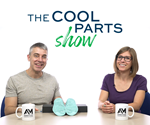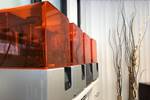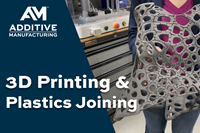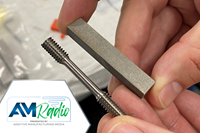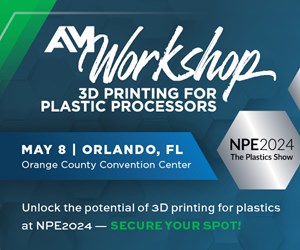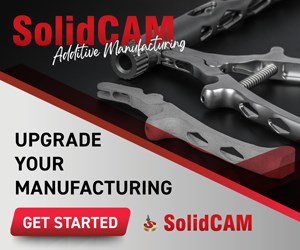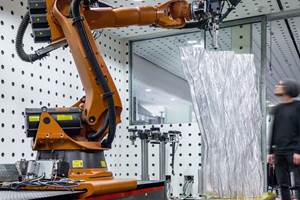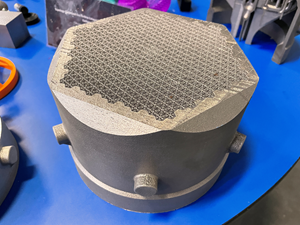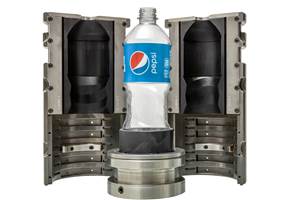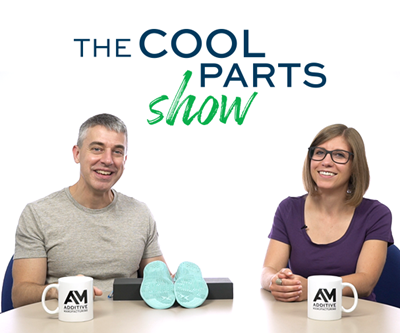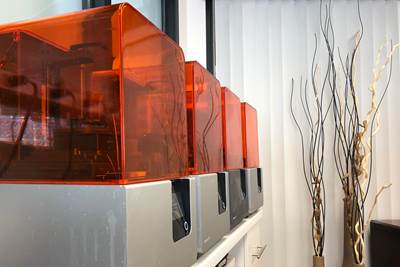How 3D Printing Changes Products in the Circular Economy (Video #4)
3D printing makes possible new and different consumer goods, but also changes the buyer's relationship to those goods. More in this video, part of our series on 3D Printing and the Circular Economy.
Conventionally manufactured products too often force the consumer to compromise. A pair of shoes may be slightly too small for the wearer’s feet; a table slightly too large for the space; the color of a lamp not quite the right match for the rest of the decor. Tooling holds these products back, forcing them into designated boxes and compelling the consumer to choose from options that often don’t quite work.
3D printing flips this scenario on its head; if complexity is free or nearly so, it is possible to make exactly the right shoe, table or lamp for the consumer’s needs and tastes. Learn how just the right product can support a more sustainable economy in this video, part of our series on 3D Printing and the Circular Economy.
Resources and Related Links
- Videos in this series: What Is the Circular Economy? | Materials | Design | Manufacturing | Product | End-of-Life
- Smartphone technology supports wearer-specific custom glasses
- Advanced scanner enables on demand, custom shoe insoles
- Sustainable furniture from custom design to end of life
Transcript
Welcome to our series on 3D printing and the circular economy. In this video, we'll take a look at how our relationship with products needs to change and the roles that 3D printing can play.
If you think about the products that you have around you right now, your shoes, your chair, maybe your jewelry, they come in these standardized sizes and configurations, but it's not because all human bodies fit into this set of sizes. It’s because someone has invested in time and money into making tooling that can produce these products in those standardized sizes. Once you have made that investment, it's a lot easier to just make a whole bunch of the same thing over and over again to change it up for every customer.
3D printing changes the game. Because there's no tooling you can not only produce on demand, you can actually design to order. There are companies doing this right now with smartphone scanning apps and parametric design tools in a browser that allow the customer to design exactly the pair of shoes, chair or ring that they want to wear.
The design freedoms possible with 3D printing allow products to more precisely fit a niche. If a customer can get exactly the pair of shoes that they want in the right size and shape for their foot, in the colors that they've chosen, that pair is going to last them a lot longer than an off-the-shelf pair of shoes that's not quite the to their tastes and doesn't quite fit right.
Finally, 3D printing enables easier recapture and repurposing of products at the end of their lifecycle. If you were paying attention in the Material and Design videos, you know that 3D printing allows us to use fewer materials and to use less material. It also enables us to add QR codes and other kinds of identifying information into products so that when that material is eventually recaptured, it's easier to process into something new.
With 3D printing, you can create exactly the product that your customer needs, put it out into the world and have a plan for what happens when it comes back. Learn more at gbm.media/circularAM and at AdditiveManufacturing.Media. Thank you for watching.
Related Content
Copper, New Metal Printing Processes, Upgrades Based on Software and More from Formnext 2023: AM Radio #46
Formnext 2023 showed that additive manufacturing may be maturing, but it is certainly not stagnant. In this episode, we dive into observations around technology enhancements, new processes and materials, robots, sustainability and more trends from the show.
Read More3D Printing Brings Sustainability, Accessibility to Glass Manufacturing
Australian startup Maple Glass Printing has developed a process for extruding glass into artwork, lab implements and architectural elements. Along the way, the company has also found more efficient ways of recycling this material.
Read More3D Printed Heat Exchanger Illustrates Siemens' CATCH and Release Approach
Solutions for energy efficiency, sustainability, part repair and more are developing at Siemens’ Charlotte Advanced Technology Collaboration Hub (CATCH) in North Carolina.
Read MoreHow Hybrid Tooling — Part 3D Printed, Part Metal Shell — Accelerates Product Development and Sustainability for PepsiCo
The consumer products giant used to wait weeks and spend thousands on each iteration of a prototype blow mold. Now, new blow molds are available in days and cost just a few hundred dollars.
Read MoreRead Next
Shoe Insoles Precisely Tailored to Individual Feet: The Cool Parts Show #4
This episode of The Cool Parts Show looks at how 3D printing will deliver tailored products. Scanning feet for their geometry and pressure enables Aetrex and EOS to manufacture insoles that are unique to individual wearers.
Read MoreMore Sustainable Manufacturing Through 3D Printing (Video #3)
3D printing can support the circular economy by offering an alternative to centralized mass production. More in this video, part of our series on 3D Printing and the Circular Economy.
Read MoreAt General Atomics, Do Unmanned Aerial Systems Reveal the Future of Aircraft Manufacturing?
The maker of the Predator and SkyGuardian remote aircraft can implement additive manufacturing more rapidly and widely than the makers of other types of planes. The role of 3D printing in current and future UAS components hints at how far AM can go to save cost and time in aircraft production and design.
Read More
.jpg;width=70;height=70;mode=crop)
